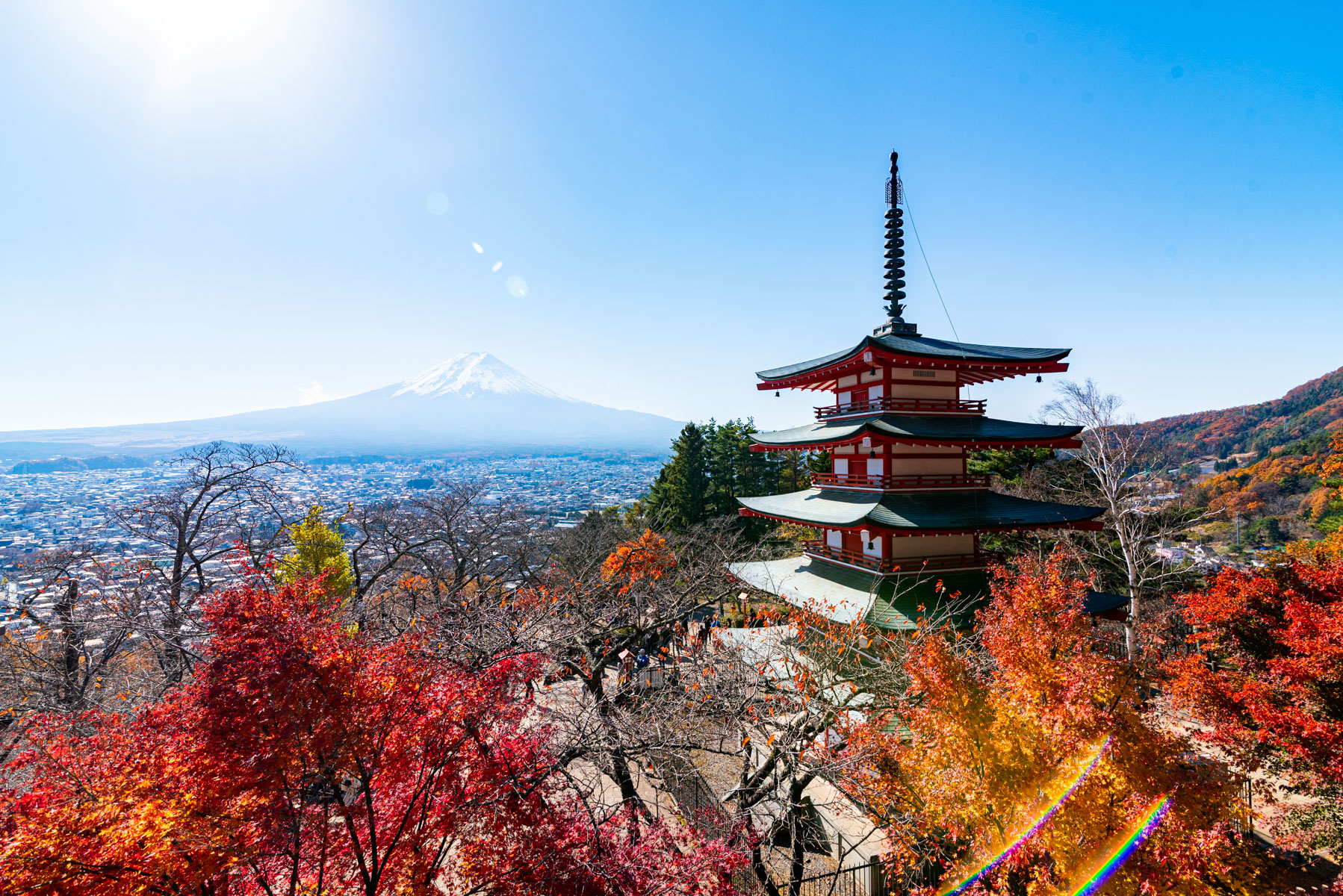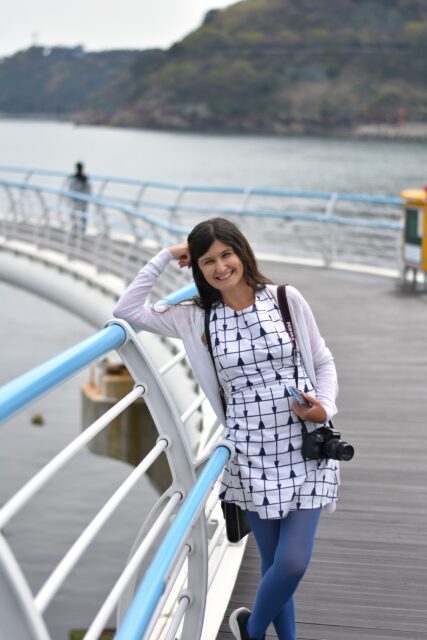Quick heads‑up, fellow travelers: Hit the Road Ket contains some affiliate links. Book through them and I earn a small commission at no extra cost to you – fueling my caffeine fix and future travels! For more details, see my Disclosures.
From samurai traditions and geisha culture to cherry blossoms, robotics, and anime – Japan has long fascinated travelers with its contrasts. If, like us, you’ve been dreaming of visiting, this comprehensive guide covers your needs for planning your trip to Japan: when to go, visa process, SIM cards, accommodation, transportation, itinerary ideas, and more.
The high interest is also generated from the fact that the country is highly homogeneous and hasn’t been as welcoming to visitors for centuries. This created even more mysterious aura. Nowadays, Japan is open to visitors and not surprisingly is one of the most popular destinations in the world. So, while no longer shrouded in mystery, it remains intriguing.
I can’t exactly say since when did I want to go to Japan. For a long while, I considered it rather unreachable destination due to extremely high price, which I simply couldn’t afford. But then I found out that it’s not as expensive, as it seemed. Hotel prices are reasonable, and everything got somewhat more affordable for tourists, due to fluctuation of Yen rates. We already managed to visit Japan twice, but would return again as soon as we get a chance.
- How Long to Spend in Japan
- When to Visit Japan
- Visa Requirements for Japan
- Other Requirements for Japan Travel
- Money Matters for Visiting Japan
- Accommodation Guide for Visiting Japan
- Apps you will Need in Japan
- Maps
- Other Apps
- SIM Card or E-SIM in Japan
- Food and Café Culture in Japan
- Transport in Japan
- Best 1-Week Itinerary for First Time Visit to Japan
- Best 10-Day Itinerary for Japan
- Best 3-Week Itinerary for Japan
- Things you Need to Book in Advance for your Visit to Japan
- Other Tips for Travelling around Japan
- Safety in Japan
- Japanese People
- Language
- Accessibility in Japan
- Public Toilets in Japan
- Clothes in Japan
- Carry Additional Socks in Japan
- No Eating while Walking in Japan
- Tax Free Shopping in Japan
- Carrying a Passport
- Tattoos in Japan
- Smoking in Japan
- Packing for Japan
- Travel Insurance
How Long to Spend in Japan
No amount of time is ever enough to thoroughly explore this amazing country, but for your first visit to Japan I suggest at least 10 days. With less than that, you will have to carefully choose one city you would most like to visit.
On our first trip we allocated almost 3 weeks to at least experience parts of it. Our trip was full of historical temples, shrines and castles, cutest trains, unique cafes, gorgeous gardens and so much more. It absolutely exceeded our expectations tenfold.
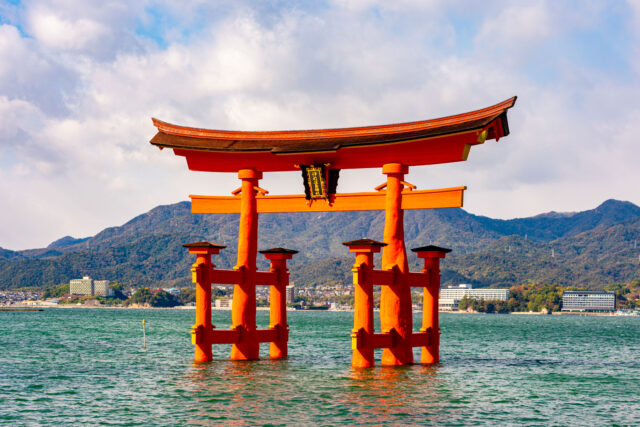
We then visited again less than a year later for another 10 days. After our two visits, we feel we would love to have all the time in the world to explore this awesome country.
When to Visit Japan
I guess Japanese Sakura blooming season is widely known occurrence. So everyone knows, spring is the best time to visit Japan. Interestingly, I have seen cherry blossom blooms in a number of countries, but somehow Japanese Sakura season is differently revered, due to a lot of symbolism associated with it. Koreans actually do have many traditions related to cherry blossoms too but that’s not as widely known.
If you are wondering, when is cherry blossom season in Japan, it’s usually in March-April. Every year, as the season comes closer, the Japan Tourist organization sets up and updates the forecast for exact dates of the season. Track the forecast from December-January. Still the problem is that the forecasts can’t always be fully correct. So if you are absolutely keen to catch it, you should book at least two week stay.
Traveling to Japan in Autumn instead and wondering when the Autumn foliage (Momiji) season is? It’s usually in November December, with possible exception of Sapporo in October. This season also varies and you should track the forecast closer to the season. The yellows and reds can be seen across the country from October to early December, but this changes every year. Plus, the weather is mild and drier than summer. I actually decided for this season for our first trip, as the colorful photos looked amazing. Turned out it was absolutely worth the hype.
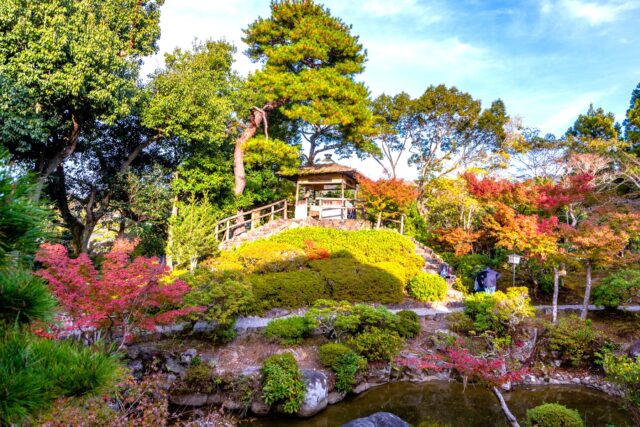
In addition to these two most popular seasons, almost all of spring and the end of September-October period is good to visit the country. Just keep in mind that the Golden week in May, when Japanese get long holidays, may complicate your trip, due to crowds.
Winter is the dry and cold season so not as popular. While summer is hot and very humid, however, July and August are still busy seasons due to school holidays. If you can avoid those 2 months, definitely do so, as it’s simply not a good timing, while still very crowded.
Visa Requirements for Japan
Note: Make sure to open and check the official websites linked in this article, as there are some scam websites, which claim to offer similar services.
Japan provides visa free access to citizens of 71 countries in the world. Japan plans to introduce Electronic System for Travel Authorization (JESTA) – this will required tourists to fill the electronic form before their travel. However, at the moment you can travel freely. It will be introduced in 2030.
There are also a few countries, which are eligible for E-visa. You may be eligible for the e-visa, if you have a permanent residency of certain countries, so definitely double check this information.
If your country, like mine, is not on either of those lists, you will have to obtain an actual visa at a Japanese embassy near you. Make sure to apply no earlier than 3 months in advance. You will be given a visa valid for 3 months from the date of issue. It means that you have to enter Japan in that timeframe, not that you should leave in that timeframe. The visa will also say, how long after entry to Japan it is valid for – this depends on what you request yourself. The first time I applied, my plan was for three weeks, so my visa indicated 30 days. Second time, I got a 15 day visa, when I gave the itinerary of 10 days.
The tourist visa, called temporary visitor visa, application requires:
- 2 copies of the visa application form that you filled online,
- Travel itinerary indicating which cities you will be visiting and the hotels you will be staying at (make sure to put the phone numbers of the hotels in the part called Contact details) – you don’t need to make this as huge as I did, practically the main thing is to list the major places you will probably visit.
- Copies of your flight tickets,
- Documents proving your financial ability. Inquire with the embassy what exactly they require – I had to bring my work note and bank statement,
- 2 photos and,
- Passport, of course.
Copies of accommodation bookings are not necessary. I brought them and they gave it back without even looking. You just indicate this information on the travel itinerary form.
There was no fee to be paid for the visa in Georgia, however, this may vary in different countries, so make sure to inquire with the relevant embassy.
The process wasn’t difficult. After filling in the online application form, I made an appointment to visit the embassy and left the listed documents. The visa is normally ready within 5 working days.
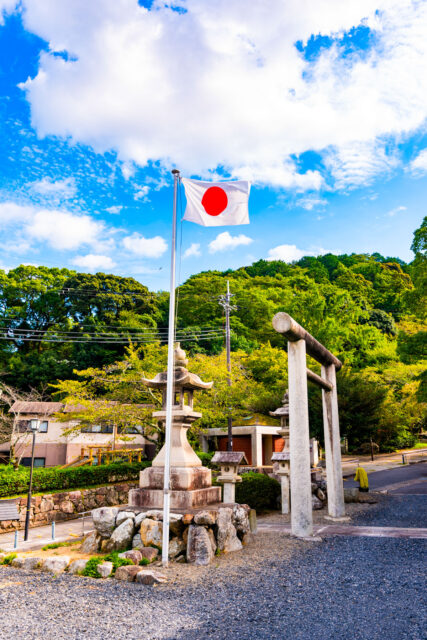
Other Requirements for Japan Travel
There are two forms you will actually need to fill for passing through Japanese immigration. However, you don’t necessarily have to do anything in advance. You have an option to do everything on the flight or on the spot, when you arrive.
- Immigration declaration form can be filled online via Visit Japan website or in person on the spot. We actually were not given this form on the plane (we were given customs declaration though), so enquire if they have one. If not, you can pick it up and fill while standing in the passport control queue, which is usually quite long.
- Customs declaration is a form you will need to fill with the information or any goods or money you are bringing into Japan. You need to fill one declaration per family. You can fill the form before travelling to Japan via Visit Japan website or do it on the way or upon arrival. We got the physical form on the plane. It only took a few minutes, as we had nothing to declare.
I personally recommend filling the physical customs declaration card, as we did both times, given that we encountered no delays whatsoever with it. Upon arrival, after passing passport control, it took us 2 minutes to present the form, there were basically no queues. On the other hand, if we filled the form online, we would have to fill same information on the computer screens provided before passport control and that’s one additional unnecessary step, which will delay you more.
Money Matters for Visiting Japan
As I mentioned before, Japan is certainly not as expensive, as most people imagine. If you are wondering, how much will it exactly cost you, it depends only on your travel style. You can travel cheaply staying at budget hotels, eating the konbini food and visiting the numerous free and cheap places. You can also plan a luxurious travel.
How much 2 people spent in Japan: First time 2 of us spent less than 3500 USD combined (1750 USD per person) on a 3-week trip to Japan. This does not include our flights (for us flights cost 2000, but yours may be very different). Here is the breakdown of our expenses:
- 1100 on hotels (average of 50 USD a night),
- 800 on trains,
- 500 on sightseeing (but we didn’t visit the most expensive ones, like Disney or Universal),
- About 700 on food and coffees (we rarely ate at restaurants – konbini food, small ramen places and so on mostly),
- The rest was miscellaneous – like our spending in Daiso, Uniqlo and the drug stores.
Second time on a 10-day trip we spent about 1600 USD excluding flights – this is combined for 2 people. This was spent on hotels, trains, attractions and food/coffee.
These prices are for mid-range budget: I prefer hotels (business hotels in case of Japan), saving on food (konbini food in good enough), splurging on trains (I love trains and they save time), cultural sightseeing spots – I visit all temples, palaces, old mansions and other cultural spots I want, while skip the attractions, like Universal.
Find my guide on how to save money on travel in Japan, as well as whether to bring cash or card.
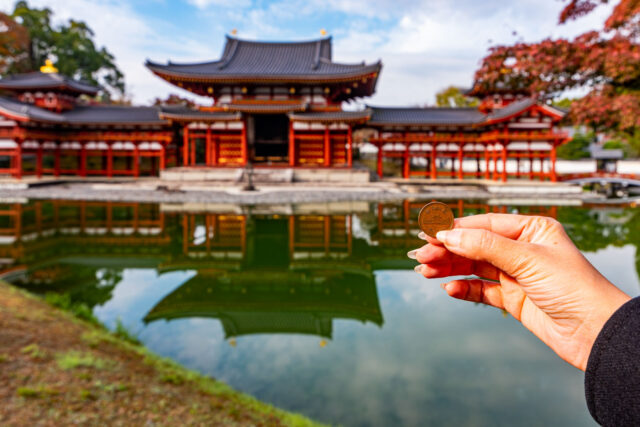
Accommodation Guide for Visiting Japan
Finding accommodation in Japan is not difficult, as you have abundance of options. We found business hotels to be the best option for us. You can book them direct or via third parties – I used Booking.com, Expedia, Hotels.com and Agoda with great success, as they provided cheaper rates than direct bookings. We stayed at over dozen hotels during our two trips and encountered no issues.
You can find my tips and tricks for finding best budget-friendly accommodation options here.
Apps you will Need in Japan
Maps
- Google maps: Of course you can’t visit Japan without it. It works pretty well in Japan. I haven’t noticed anything else, except some very small issues, like not being able to locate you in very crowded stations.
- Japan Travel by Navitime: If you want more exact app for transportation, use Navitime. The app provides detailed information on which transport you need to take with the price breakdown. You can also indicate here, if you have any of the travel passes, whether JR Pass, any of the regional passes (such as Shikoku rail pass or Hokaido rail pass) or any of the city specific passes (such as Osaka Amazing pass or Tokyo day pass). The app also provides some interesting walking itineraries and guides, but we didn’t really use the app for those purposes.
- Citymapper: You can also consider this in bigger cities, as it provides great option for finding transportation options.
- Tokyo Jisou Maps: This one is very cool for history nerds. While you won’t need it for getting around, it overlays historical maps over Google maps and you can find out the information about the historical places you are visiting.
Other Apps
- Google translate: The app works well here. Particularly useful is the photo translation feature, as we don’t read and write kanji. Make sure to download it, so that it works even when you don’t have internet. We did use the app extensively, while looking at menus in restaurants, choosing what to buy at the convenience store and reading the signs of the sightseeing places (some don’t have English signs). This was probably the most necessary app after maps.
- Taxi apps: taxis are rather expensive in Japan, however, you may need to use them in some locations. There are several options – Go and Uber are some of the most popular options.
- Suica app (only for Iphone users) – this app provides an electronic version of Suica (the transport card that works around Japan), so you won’t have to look for a physical card. However, unfortunately it’s only available for Iphone users. It won’t work for Android phones produced outside Japan.
- Shinkansen SmartEX App: This app is great for easy booking of train tickets. The main issue is that it won’t work in some countries. I couldn’t download it in Georgia, as this country is not supported. In such case, you can use VPN though.
- Klook and Trip.com: while these apps aren’t Japan specific, they are reliable third party sites that may come in handy, if you would like to prebook some expensive major attractions. I didn’t use it but Rakuten also comes highly recommended. Have a look at the Klook Pass for Tokyo or Klook Pass Kansai – they may save you money if you are seeing a few places in a short period of time. We personally didn’t do any of the attraction parks (Disney or Nintendo world) or aquariums, so getting this wasn’t worth it for us, but it may be for you. We did however use Klook to get the Japan Rail Pass and a number of events, such as Teamlabs Kanazawa castle event. The event tickets were often cheaper than on official websites, so check it out. It worked very well for us on all occasions.
- Ecbo Cloak: this app doesn’t direct to cloakrooms, as I thought, when I first saw the name 😊 It provides information about the luggage storage spots. If you are doing a stopover and need to store luggage, while to explore, it will definitely come handy.
- NERV: Japan has an amazing disaster response system. This app is for weather and alerts for anything that might be happening during your trip.
In addition to these Japan specific apps, you should have your usual travel apps downloaded. See the thorough list here.
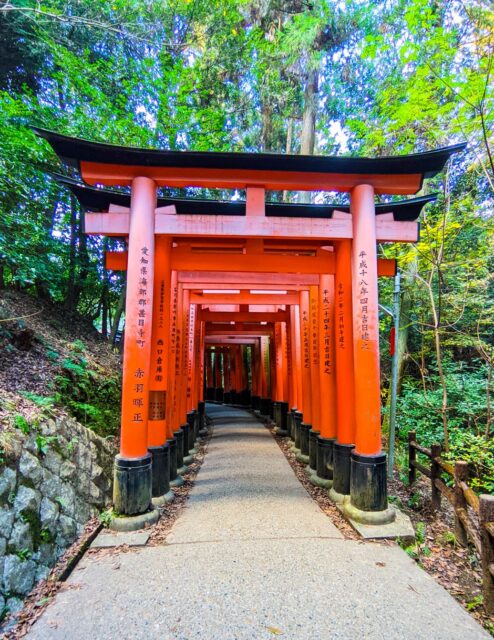
SIM Card or E-SIM in Japan
The main issue with getting sim cards in Japan is that, when you buy them as a foreigner, you are offered a data only plan, so you don’t have a Japanese number. Plus, you can’t add any data once it’s over, which is rather annoying. I have heard only Mobal is the only provider, which offers the option of getting a Japanese number, we will definitely check it out next time.
Sim cards aren’t cheap in Japan. You can either preorder them and pick up upon arrival at the airport or buy them locally – you won’t save any money from either option. You can get them at 7/11 and other convenience stores, as well as vending machines at the airport. You can also buy them at the electronics stores, such as Yodobashi.
We got the card from 7/11 at the Narita airport by paying 5000 yen for 10 GB for 30 days. Second time we got one from Kansai airport – I believe it was around 3500 yen for 5 GB for 10 days. We haven’t found any cheaper options. I doubt there are any cheaper ones for tourists.
E-sim is a better option in Japan. The deals are pretty good. Their plans are half the price of what we paid for a physical sim card in Japan (We haven’t used e-sim, as our phones are quite old). Check out Airalo (10 GB for 30 days is 18 USD) or Saily (10 GB for 30 days costs a bit over 17 USD).
Many tourists also rent pocket wifis. This possibly could be an option for you, if several people are travelling and only tattering from mobile wouldn’t be sufficient. Otherwise, it seems quite a hassle to me to carry the pocket wifi with. You can rent these before visiting Japan through Klook and other third party sites and pick up at the airport, once you arrive. You might be able to get one on the spot too at the bigger mobile shops, however, I haven’t heard of this option.
Food and Café Culture in Japan
I am definitely not the first person mentioning the food quality and amazing café culture in Japan. These topics definitely need separate articles.
Here are the guides to your options on where to eat in Japan, if you are not a foodie and
on the vibrant café culture in Japan and cafe recommendations
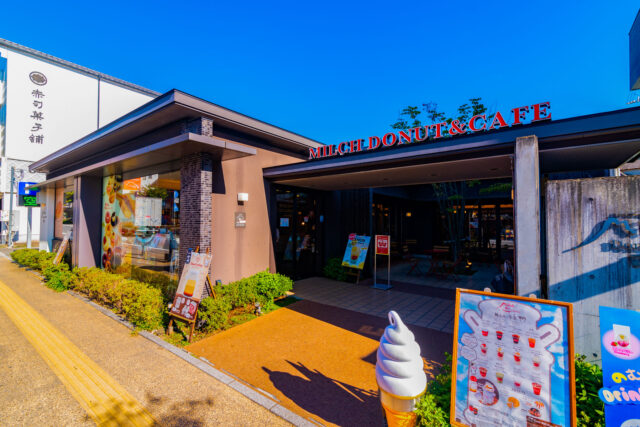
Transport in Japan
Public transport in Japan is amazing – from Shinkansen to fancy buses to amazing metro network in the cities, you have great options in many parts of the country.
Lately, the country has been promoting domestic flights for tourists. Namely, the Japan Airlines offers free domestic flights to everyone who traveled internationally with them to Japan. To make most of this offer, you will have to book international and domestic flights together.
Even if you are not flying with Japan Airlines and, hence, not eligible for the free domestic flights, flying may still be cheaper compared to train travel. If booked early, your flight tickets may be half the price of the Shinkansen price. Check your prices via Skyscanner for instance. However, you should consider the length of time it requires. While the flight itself can be very short, like half an hour or an hour to fly across the country, you should take into account the length and price of getting to and from the airport. Plus, you will have to show up to the airport at least an hour in advance of your flight. Considering all this, flights usually take more time than bullet trains.
The preference on hiring a car in Japan depends on the location you are at. If you are traveling between the major cities, like Tokyo to Osaka, you will either have to take the highways with the tolls or lose a lot of time driving. The journey will cost you a lot. In this case, trains are much better option. On the other hand, if you are traveling in more remote locations, where public transport is relatively limited, car can come handy. For instance, if you want to visit Takachiho gorge or Mount Aso area from Kumamoto, driving may be the best option – public transport in these areas aren’t sufficiently well developed.
For your options to travel by train or bus across Japan, see my following posts:
Here is the detailed information about public transport in Japan.
Also check out my comprehensive guide to train travel in Japan
You will find all details about the efficiency of Japan Rail Pass
Eki stamps – the cute stamps you can find at the train and metro stations, as well as some bus stations and sightseeing trains – is a part of traveling around Japan. Look near the ticket entry gates. If you don’t find them, ask the station staff. They are sometimes holding it inside the booth.
As I love collecting these stamps and I had difficulty finding a cute stampbook, we decided to create our very own one. We hand‑picked over 100 photos – from Tokyo’s neon streets to Shirakawago’s mountain charm, Mount Fuji’s majesty to hidden shrine details. The transparent layout keeps your stamps and notes crisp and visible, while letting the scenes beneath shine through.
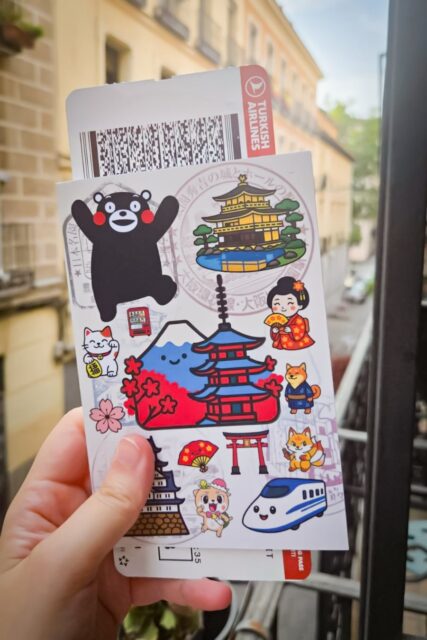
Best 1-Week Itinerary for First Time Visit to Japan
If you only have 7 days in Japan, you will want to make the most of your time. Here is the packed itinerary for your week. As you notice, I included the most time in Kyoto – 3 days. You can of course change this and spend more time in Tokyo instead, if you prefer exploring modern cities over historical locations. For this itinerary, it would be best to fly to Tokyo and leave from Osaka.
Day 1 – Tokyo
See the detailed tips and itineraries for visiting Tokyo.
See the detailed itinerary for day 1 in Tokyo.
Day 2 – Tokyo
See the detailed itinerary for day 2 in Tokyo.
Travel in the evening to Kyoto
Day 3 – Kyoto
See the detailed itinerary for day 1 in Kyoto
Day 4 – Kyoto
See the detailed itinerary for day 2 in Kyoto
Day 5 – Kyoto
See the detailed itinerary for day 3 in Kyoto
Travel to Osaka in the evening
Day 6 – Nara day trip from Osaka
See the detailed itinerary for day trip to Nara
Day 7 – Osaka
See the detailed post for Osaka
Best 10-Day Itinerary for Japan
This 10-day itinerary will allow you to have more days in each location. This itinerary is also customized for arriving to and departing from Tokyo. If you are able to depart from Osaka, you can change the order of days.
Day 1 – Tokyo
See the detailed tips and itineraries for visiting Tokyo.
See the detailed itinerary for day 1 in Tokyo.
Day 2 – Tokyo
See the detailed itinerary for day 2 in Tokyo.
Travel in the evening to Kyoto
Day 3 – Kyoto
See the detailed itinerary for day 1 in Kyoto
Day 4 – Kyoto
See the detailed itinerary for day 2 in Kyoto
Day 5 – Kyoto
See the detailed itinerary for day 3 in Kyoto
Travel to Osaka in the evening
Day 6 – Nara day trip from Osaka
See the detailed itinerary for day trip to Nara
Day 7 – Osaka
See the detailed post for Osaka
Day 8 – Himeji day trip from Osaka
See the detailed post about Himeji day trip
Day 9 – Tokyo
Travel to Tokyo in the Morning
See the detailed tips and itineraries for visiting Tokyo.
See the detailed itinerary for day 1 in Tokyo.
Day 10 – Day trip to Kawaguchiko from Tokyo
See the detailed itinerary for Kawaguchiko
Best 3-Week Itinerary for Japan
If you have 3 weeks in Japan, you will be able to do a more in-depth exploration. This itinerary can be rearranged according to your wishes. The itinerary is build for the round trip flight from your country to Tokyo. But if you can fly into Tokyo and fly out to Osaka, then this can change relevantly by doing everything around Tokyo in the beginning.
For a 2-week itinerary, remove some of the day trips and shorten your stay in Tokyo and Kyoto.
Day 1 – Tokyo
See the detailed tips and itineraries for visiting Tokyo.
See the detailed itinerary for day 1 in Tokyo.
Day 2 – day trip from Tokyo to Nikko
See the detailed post for step-by-step guide on day trip to Nikko
Day 3 – Tokyo
See the detailed itinerary for day 2 in Tokyo.
Travel to Kanazawa in the evening
Day 4 – Kanazawa
See the detailed tips and itineraries for visiting Kanazawa.
See the detailed itinerary for day 1 in Kanazawa
Day 5 – Kanazawa
See the detailed itinerary for day 2 in Kanazawa
Day 6 – Shirakawago
See the detailed itinerary for day trip to Shirakawago
Day 7 – Takayama
See the detailed itinerary for 1 day in Takayama
Travel to Osaka in the evening
Day 8 – Nara day trip from Osaka
See the detailed itinerary for day trip to Nara
Day 9 – Koyasan day trip from Osaka (this can be done with overnight temple stay as well)
See the detailed post on a trip to Koyasan
Day 10 – Himeji day trip from Osaka (with possible stop in Kobe)
See the detailed post for a trip to Himeji
Day 11 – Osaka
See the detailed post for Osaka
Travel to Hiroshima in the evening
Day 12 – Miyajima day trip from Hiroshima
See the detailed itinerary for day trip to Miyajima
Day 13 – Hiroshima
See the detailed itinerary for 1 day in Hiroshima
Travel in the evening to Kyoto
Day 14 – Kyoto
See the detailed itinerary for day 1 in Kyoto
Day 15 – Kyoto
See the detailed itinerary for day 2 in Kyoto
Day 16 – Kyoto
See the detailed itinerary for day 3 in Kyoto
Day 17 – Kyoto
See the detailed itinerary for day 4 in Kyoto
Day 18 – Kyoto
See the detailed day itinerary for day 5 in Kyoto
Travel to Tokyo in the evening
Day 19 – Tokyo
See the detailed day itinerary for day 3 in Tokyo
Day 20 – Kawaguchiko day trip from Tokyo
See the detailed itinerary for day trip to Kawaguchiko
Day 21 – Tokyo
See the detailed day itinerary for day 4 in Tokyo
Things you Need to Book in Advance for your Visit to Japan
Japan is one of the countries, where certain things need to be booked in advance, if you don’t want to miss out. This includes sights, trains, cafes, restaurants and more.
However, if you are planning a last minute trip and can’t manage to prebook everything, you will have plenty of things to do still, so don’t consider this, as something that will ruin your trip. You may just not manage to visit some of the extremely popular spots, but that’s perfectly fine, as Japan has so much to offer, you wouldn’t be able to exhaust everything in a lifetime.
I didn’t book many things (as I don’t like being tied down), but I didn’t feel I missed out on anything. Whatever I booked I did via Klook, Trip.com and more occasionally, using official websites. This was especially due to the fact that official websites often get stuck and are difficult to navigate when not in Japanese. Plus, these third parties can save you money on many occasions.
Other Tips for Travelling around Japan
Safety in Japan
If you ask me, is Japan safe, my short answer will be yes. As you can see, I didn’t write a separate section on safety, simply because it’s not something you will have to think about in particular. I believe Japan is a great destination even for solo female travelers.
Of course, you should take the usual precautions, as you would anywhere – like avoiding dark deserted alleys at night, if you are alone – but overall, it’s as safe for tourists, as it gets. That said, the harassment of women is still a big issue in the country. Plus, the yakudza is still quite strong, however, they don’t usually engage with foreigners, unless you decide on some very risky behavior – which obviously is not advised anywhere, especially not in a country you don’t know much about.
Japanese People
Japanese are very respectful to everyone. They won’t show you, even if they don’t like something or are offended. Of course, as in other big cities around the world, in Tokyo, Osaka and Kyoto, people are rushing to work and generally not smiley or nice to you. But we found that in smaller places, people are so welcoming and nice. For instance, in Uji, while climbing a hill, within 15 minutes 3 people smiled at us and said hi.
Language
As expected, we found that English is not widely spoken around Japan. Even in bigger cities, in touristy areas, people in shops and restaurants know only a few words. But the Google translate works fine for most of the things you might need. Saying even a couple of Japanese words actually make people better disposed to you. I honestly only know a few words: Konichiwa – hello, Arigatou Gozaimasou – thank you (don’t just say Arigatou, because this is only for close friends and it may taken, as impolite), Sumimasen – excuse me, sorry.
Accessibility in Japan
It’s definitely difficult to generalize accessibility option all around Japan, but some transport options and sites may not be accessible. For instance, some metro stations don’t have elevators or they are located very far. On the other hand, most buses, train stations, sights are accessible. Japan Accessible Tourism Center and Accessible Japan provide great resources to research accessible transportation and sightseeing options.
Public Toilets in Japan
Public toilets are easy to find at a lot of locations – train and metro stops, parks, popular attractions, convenience stores, etc. You will usually find the Western style (but mostly high tech) toilets. Sometimes, outside the cities, you may come by squat toilets though. We never noticed lack of toilet paper or any other issues with public toilets, so you don’t need to worry about carrying paper.
One note: these high tech toilets obviously have so many buttons. I personally often had issues finding which one was the flush button. Normally it should be blue and the biggest button in my experience, but not necessarily. Google translate helped quite often, when in doubt.
In old towns the toilets are often in old buildings that seamlessly blend with the environment (like on this photo in Hida Furukawa). We loved this idea, not to make the environment ugly with modern looking toilet booths.
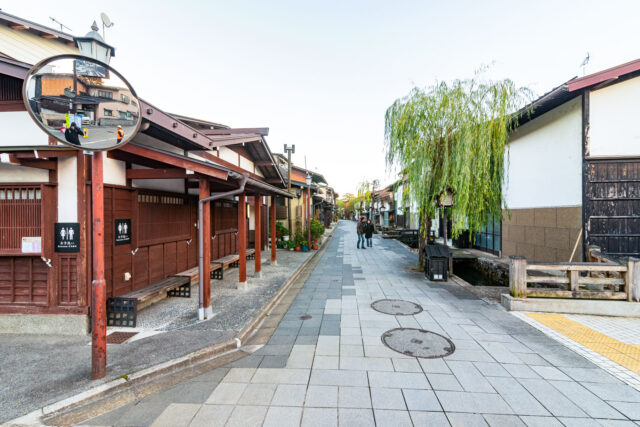
Clothes in Japan
I am not writing a separate section to explain what to wear in Japan, because there are no specific rules about this. If you want to dress similarly to Japanese, then you should try comfortable, business casual and toned-down clothing. Japanese wear less bright colors (preferably wear creamy, black, gray) – so practically nothing flashy. They don’t often wear sleeveless clothes with cleavage, although you will see short skirts.
Your clothes will of course highly depend on seasons. In summer the humidity is strong, therefore, you should choose breathable clothes, like linen or Uniqlo’s Airism clothes. In Autumn and Spring, make sure to have layers as temperatures can change often. In winter temperatures can drop significantly, so wear wool, cashmere and Uniqlo’s Heattech clothes.
I often see people asking, if it’s ok to wear jeans or casual clothes in Japan. It is perfectly fine. Japanese do wear jeans, it’s just not as common, as in some countries.
Carry Additional Socks in Japan
This is a surprising addition for most people, I am sure. However, in Japan as in most Asian countries, you will have to take your shoes off in temples, people’s homes and even some cafes. If you, like me, don’t like walking barefoot or get cold easily, a separate paid of socks in your bag can make a huge difference. I was happy I had thick socks with when we visited the Takayama Jinya – it was freezing and we had to take shoes off.
No Eating while Walking in Japan
Please, don’t snack, while walking in Japan. This may sound strange for most tourists, but Japanese people don’t eat outside, while walking. It is considered rude. Most people eat wherever they buy their food or once they get to their destination. As a result of this the streets are clean.
Tax Free Shopping in Japan
All foreigners are eligible to shop tax free at the participating shops – look for tax free sign. You can get the tax free “discount” on the spot. Once you have your items, you go to the counters saying tax free, show your passport and simply pay the amount with tax already deducted.
However, from November 1, 2026 Japan is going to introduce a new rule – you will pay the full amount in the shops and get a tax free refund at the airport. This will be the same practice, as in most European countries.
Carrying a Passport
You are legally required to always carry your passport with you. But even if this wasn’t a requirement, you will be needing the passport for some situations – like to get tax free from the shops or to confirm the validity of your Rail Pass (if you have one).
Tattoos in Japan
You may have heard that Japanese don’t much like tattoos, which has to do with the understanding, that criminals used to have them. However, we have seen foreigners get around without issues. The only problem you might have, if you have a tattoo, is at some onsens – hot springs/bathes. Some of them won’t have an issue with it, but some do. So do enquire, before going to one.
Smoking in Japan
Before my first visit, I had heard that Japanese do smoke inside buildings and it’s an issue, so one may have to get used to it. I am pretty sensitive to the smoke smell, so I anticipated I would be bothered. But to be honest, during our trip, we never encountered any smoked restaurant, café or a building we visited. In fact, I believe most establishments ban smoking and you are not allowed to smoke in the crowded areas outside either. At hotels we booked non-smoking rooms and also did not feel any smoke smell. That said, we didn’t go to any pachinko parlors or old school bars, so might be an issue there.
Near attractions and stations, you will find the enclosed spaces designated for smoking. I really loved this idea, as I didn’t have to deal with smoke at the crowded places. If there is no such space around, look around where people are smoking – for example, in Fukuoka near our hotel there was an area with benches, where people were smoking.
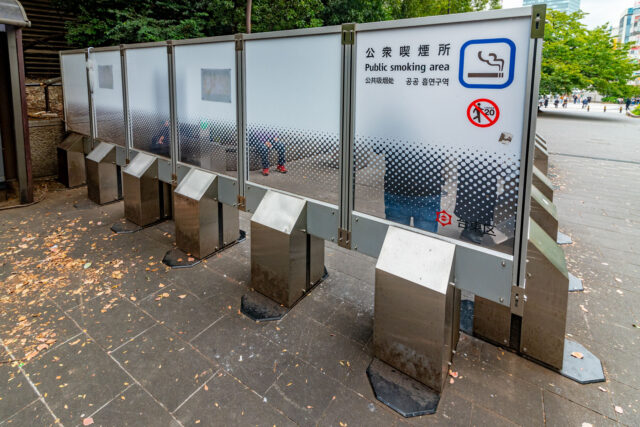
Packing for Japan
Honestly, I don’t really think anyone needs a strict packing list for Japan. Most travelers pack the basics and buy whatever they need on the spot. When one says Japan is a shopping paradise, it’s not an exaggeration: you can buy anything – skincare, clothes, sweets, small and big trinkets and hundreds of other amazing things no one can help but buy in Japan. Even I – a person, who hates shopping and prefers to travel light – bought a duffel bag in Japan to bring all our purchases back (you can get one in Don Quixote, for example). Some people bring a suitcase inside another suitcase to save space for all the shopping 😊
Travel Insurance
While you don’t need anything specific for Japan, compared to other countries, basic travel health insurance (at least for medical treatment and hospitalization) is essential. I personally use an international health policy, which covers all countries (except the US, of course). You might also consider additional travel insurance, depending on your needs – such as coverage of trip cancellations or delays, lost luggage or valuables or even emergency evacuation.
Japan’s healthcare system is excellent, but it’s not free for tourists. As a result, forgetting a health insurance may result in unexpected expenses, even in case of minor issues.
